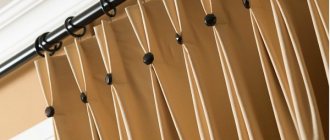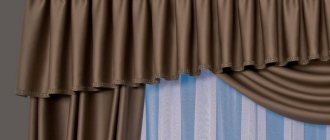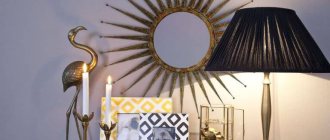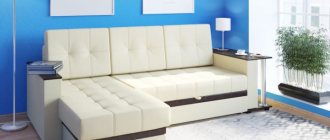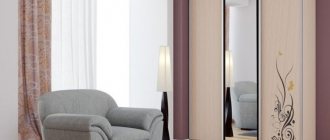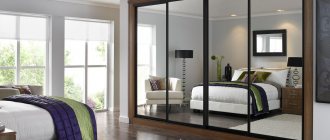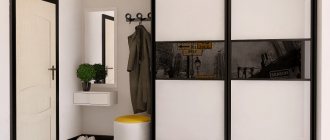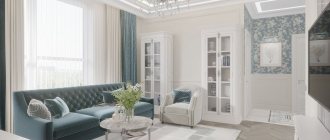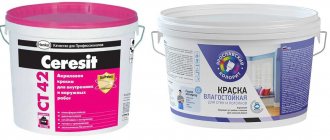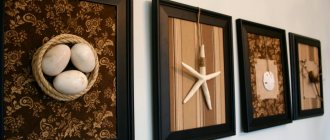Creating comfort in a home is a whole science in which there are no trifles: every detail and design element plays its role, helping to make it elegant and comfortable. An important role in this matter is played by correctly selected and hung curtains.
No interior is complete without beautiful curtains that frame the window openings.
Gone are the days when the housewife, armed with a needle, manually sewed loops on the curtain to secure it on the curtain rod hooks. This uninteresting activity took up a lot of time and required patience and accuracy.
The main thing is to secure the fabric in such a way that it decorates the room and creates a special mood.
Today, these problems are much easier to solve if you learn how to hang curtains on curtain tape on hooks.
Advantages of curtain tape
This strip is made from different materials. For curtains made of thin fabrics: organza, veil and others, a transparent, soft, thin but durable material is used. To work with denser bases, the thickness and texture of the braid will be different. It is easy to stitch it on a machine in any part of the product, depending on the design ideas for the curtains.
A very convenient device for draping curtains is curtain tape.
With its help, you can form folds of various configurations, adjusting their size and number. It has the following features:
- makes sewing easier;
- there is no need to sew loops for hooks - they are already on the tape;
- makes it possible to drape fabric of any texture and density;
- allows you to design window openings in an original way;
- with its help you can adjust not only the length, but also the width of the curtains.
Using curtain braid, beautiful folds of the same size and shape are created.
In addition, after washing it does not shrink and retains its shape.
Using a curtain strip, you can carefully trim the edge and attach the finished curtain to the curtain rod without using special clothespins.
The products are presented in a variety of options and differ in the methods of fastening, size, and shape of folds, which can be designed using your imagination.
They are made from fishing line, polyester, non-woven base.
There are also different connection methods, one of which is fastening loops for hooks.
They are arranged not only in one, but in several rows. The design features of the drapery depend on this:
- simple folds are made on a strip with two rows of loops;
- The upper part of the curtain can be decorated with a strip with four-row installation of fasteners.
You can attach the strip to the curtain by sewing or gluing it.
In this case, the adhesive tape is available in single-sided and double-sided versions. In this case, it is attached to the curtain fabric after smoothing the base with an iron.
The different widths of the tape - from 1.5 cm to 10 cm - allow you to use it for various options for fastenings and curtains of different lengths and materials, as well as diversify the methods of decoration.
The narrower the ribbon, the lighter the fabric should be.
It helps to perform all kinds of assemblies, including:
- horizontal;
- vertical;
- “accordion” and other drapery options, such as “pencil”, “glass”, “butterfly”, “bouffe”, “tulip”, fan-shaped and others, where curtain tape is used everywhere for installation on hooks.
There are several types of curtain tapes on sale, each of which is designed to assemble the fabric in the desired way.
There are other types: zigzag, tubes, “triplets”. Each type of curtain tape is made from different materials and has a parameter called the assembly factor (CS). It is the ratio of the original width of the curtain to the folded width, and is usually equal to 1.5; 2; 2.5 and 3. (KS) is usually indicated on the product packaging.
The wide ribbon has several rows of hooks that allow you to hang the curtain higher than usual, raising the fabric above the curtain rod.
Types of mounting tape
The production of this type of semi-finished product has become widespread. According to the latest data, their number has reached about seventy options. We will look at the most common and frequently used ones. They are divided: according to the density of the fabric, according to the fastening, according to the type and nature of the folds and their location.
By density
There are two varieties. Transparent is used when sewing light and airy curtains. The braid is attached to their inside. It is not visible even on translucent curtains. Opaque is suitable for heavy fabrics.
By mounting options
The sewing tape is attached to thick curtains. A sewing machine is used for this. The adhesive is placed on the fabric and ironed through thin paper. It is used to create drapery on light, airy curtains. The adhesion to the fabric of an adhesive fastening is less than that of a sewn fastening. Therefore, the fabric must be light so that the fastener holds firmly.
By nature and location
Horizontal is appropriate for long flounces. These are mainly Italian cut and lambrequins. The soft fold fits nicely across the entire width and gives the product a finished look. Vertical - for transverse drapery on lifting Roman and French curtains.
How to hang curtains with curtain tape on hooks
Before using the tape, it is a good idea to know the features of this type of fastening in order to understand how to hang curtains on curtain tape on hooks.
This method is the most common and quite simple.
They are mounted on wooden, metal or plastic ceiling or wall cornices, but it is possible to decorate a window opening without using them. To do this, special wall fastenings are installed at an equal distance from each other.
Main stages of the process
In general, the entire process can be divided into three main stages:
- preparation of material - tulle and necessary tools;
- sewing curtain tape directly;
- tie of sewn braid.
It is the curtains that make the room more comfortable and family-friendly; recently it has become quite popular to make various folds and lambrequins on the windows, the basis for which is the technology of tying the material on the braid.
In order to hang a beautiful and high-quality curtain in a room, it is best to use a special tape, which has important advantages:
- The sewing process is greatly simplified.
- The drape and folds will look even.
- A special tape will allow you to hang a beautiful finish for the window opening.
- The need to make special curtain loops for fastening to the cornice is completely eliminated.
- The tape allows you to easily and simply adjust the length of the finished product.
Tulle ribbon.
Features of curtain hooks
Before forming the drapery, the curtain must be ironed well. The hooks should already be selected in size and material, depending on the format of the curtain and the fabric used. For their production the following are used:
- metal-plastic, reliable and safe;
- metal; usually aluminum, brass or steel;
- High quality plastic, one of the new generation materials.
Attach hooks to the curtain with your own hands at an equal distance of 8 - 10 cm.
Each of them has its own advantages and disadvantages
- Metal-plastic is the most optimal for the production of fasteners. Its price is affordable with high quality. Many consider it an ideal base for making curtain hooks. They hold their shape remarkably well and are completely silent in operation.
- Plastic ones are the cheapest, they move silently along the ledge. They are suitable for light to medium weight curtains. The disadvantage is considered to be low strength. Over time, they lose their shape, and the composition on the window opening no longer looks so impressive.
- Metal hooks are the most expensive, but also the most reliable. They do not deform and securely fix the canvas, preventing it from sliding down. Their “noisiness” is considered a significant disadvantage. In addition, if they are made from cheap, low-quality metal, the products will rust, leaving dirty marks.
If the choice was made on metal fasteners, you should give preference to stainless steel.
Energy and power in electrical engineering
In electrical engineering, there are also such concepts as energy and power associated with Ohm’s law. Energy itself exists in mechanical, thermal, nuclear and electrical forms. According to the law of conservation of energy, it cannot be destroyed or created. It can only be transformed from one form to another. For example, audio systems convert electrical energy into sound and heat.
Any electrical appliance consumes a certain amount of energy over a set period of time. This value is individual for each device and represents power, that is, the amount of energy that a particular device can consume. This parameter is calculated using the formula P = I x U, the unit of measurement is the watt. It means moving one ampere by one volt through a resistance of one ohm.
Thus, the basics of electrical engineering for beginners will help you understand the basic concepts and terms at first. After this, it will be much easier to use the acquired knowledge in practice.
Step-by-step instructions for using curtain tape on hooks
To decorate a room, it is important to know how to hang curtains with tape on a rod for a more durable “fit.” The product can already be sewn industrially, or it can be attached independently. In order for the finished composition to hold firmly, it is important to know the order of its design and choose the right braid, taking into account such an indicator as the assembly coefficient.
The KS determines the “pitch” of the fastenings, depending on the width, which matters for the number of assemblies and their splendor.
When hanging curtains, it is important to sew the hook tape correctly. This operation is performed as follows:
- cut off a piece from the strip equal to the length of the curtain plus an increase of five centimeters;
- lay the ends of the braid down 2.5 cm each and smooth them;
- pull out the cords so that they hang freely and are not secured;
- place the tape over the allowance for the top trim and pin;
- stitch, retreating 12 mm from the top and bottom, stitch twice.
If the curtain tape has several ropes, we sew it along each of them.
Important! It is necessary to stitch in such a way as to close the fold so that the cords remain free.
Then, stepping back 10cm from the side edge, you need to hang the hook - it will be the outermost one. Having folded the curtain along this hook, the next one is hung on two loops at once - the outermost one and the one opposite it. This action is called a technical twist. It can be done differently: tuck it in immediately when the strip is sewn on.
The folds obtained on the braid after tightening the ropes should be evenly leveled.
The next element is threaded into the loop close to the collar, and it is threaded into the second one - after five centimeters. The result should be a fold. Further formation of drapery using curtain tape on hooks is done in a similar way.
Curtain tape is a convenient device used on any curtain, curtain or drapery.
Basic mistakes when installing cornices and hanging curtains
Be sure to use plugs and stoppers for curtains so that the fabric is evenly distributed along the entire length. Installation by eye is the wrong option. Before installing the cornice, you need to symmetrically mark the junction of the structure with the ceiling. Installing the cornice yourself is not advisable and difficult. After all, you cannot simultaneously fix the screws with a hammer drill and ensure that the cornice does not deviate from the line. For different ceiling finishes - different screws
So, for example, for a putty base, plastic fasteners are needed, and for a concrete base, steel fasteners are needed.
It is important to use an additional ceiling mount in the middle of the cornice if it is medium or large in size.
The cornice itself must be longer than the width of the window: at least 20 cm on each side. The distance from the window to the curtain should be at least 10 cm so that the fabric does not touch the radiator. Self-tapping screws must be installed in the wall along with dowels. You need to measure the length of the fabric not from the base of the cornice, but from the junction of the fabric and the fastening. The main mistake of incorrect measurements is that many do not take into account the width of the curtain tape, which is included in the curtain length indicators when ordering. Thus, most curtains are the wrong length.
How to properly and beautifully hang tulle on a curtain tape
If very thin and delicate fabric was purchased for the curtain, when decorating it, it is important to know how to hang the tulle on hooks, and to be extremely careful and attentive, avoiding unnecessary punctures of the fabric, so as not to deform it.
The braid sewn to the curtain allows you to decorate the window opening in an original way and drape the curtain with soft waves.
It should be noted right away that to work with such thin materials, you will need transparent or translucent tape. It is available in various widths. The craftswoman decides which one is suitable for decoration.
Curtain braid is a simple, quick way to hang light tulle, curtains or heavy curtains.
Before hanging tulle curtains, you will need:
- measure and carefully trim the fabric,
- cut off excess;
- process the edges and cut areas.
After this, you can sew the ribbon in the following order:
- bend the top edge to the width of the strip;
- carefully iron the edge of the fold;
- Tuck the edges inward and attach it to the edge of the ironed fold line, which will prolong its service.
As a rule, narrow (2.5-4 cm) braids are used on curtains where drapery is not needed.
Additional Information. Before starting work, it is necessary to wash the fabric so as not to spoil the finished curtain if it suddenly happens that the material shrinks after washing.
How to properly prepare the material
In order to be able to beautifully sew a ribbon to a curtain or tulle, and the result of the work will not disappoint you, you need to familiarize yourself with some of the subtleties of the process. When bending the tape, leave 3 cm on each side. Since this braid shrinks, it is measured with a reserve and then carefully steamed. The same is done with the fabric to which the fittings will be sewn. In this case, you can no longer expect negative consequences from shrinkage. The tape must be sewn loosely; neither the threads nor the material should be pulled.
Important! For tulle fabrics, it is advisable to purchase transparent curtain tape, and it should also have a high gathering coefficient.
When choosing a tape, you need to carefully examine the product, and if you see its large waviness, then you can already conclude that the quality of this material is low. Such fittings will not last long and will quickly become unusable.
Features of hanging tulle
The comfort and originality of the room’s interior depends on the ability to correctly design and place tulle. To make it look elegant and beautiful, you need to take into account all the nuances of handling tulle curtains.
After the curtain tape is attached to it, you need to tighten the cords (cords) tightly so that they do not pull out when tightening.
If necessary, they can be tied into knots, but be sure to check their tightness.
Note! In order for the curtain to stay tight and not slip, and also to present a complete composition, it is necessary to secure the clips and hooks. In this case, the number of loops on them should be the same.
When to use it
Surprisingly, the use of tape is not limited to just assembling the curtain at the edge of the window. Although this is logically convenient, when in order to slightly “curtain” the windows, you only need to untie the braid. You can achieve the necessary folds in several places at once and even at the very top of the curtain.
Making decorative ribbons yourself can be quite problematic, but the housewife can make the simplest options.
Examples of pleat assembly
When forming drapery, you will have to take into account the texture and density of the material. As for tulle, as well as organza, veil, mesh tulle, extreme care is required, taking into account the size of the fabric and the ornament.
In order for the folds to be soft and beautiful, the screed must be formed on both sides at the same time.
The resulting composition is fixed with a knot.
There are many drapery options. Which one to choose depends on the taste of the housewife.
Do not forget that for each drapery option there is its own assembly factor (AC).
- The most universal is the “pencil” method. It is not difficult to implement and does not require a lot of material consumption. Best (KS) – 1.5. Particularly suitable for light fabrics.
- The stitch style creates uniform rows of folds, the number and density of which is determined by the tension of the cord.
- Thin curtains with lurex threads, golden and silver glitter look great with voluminous, uneven waves of puffs. The luxurious look of the curtain is achieved through the use of a wide curtain strip with four rows of cords. Optimal (KS – from 2.5.)
- “Fan” speaks for itself, looks rich and elegant.
- Diamond-shaped screeds form a “butterfly” relief.
- If the fabric of the curtain tape is connected at the bottom with a double tuck, you get a “glass” or “glass” drapery - it is called differently. A strip with two rows of loops and (KS) 2.5 is suitable for it.
- Curtains made of tulle, organza or veil with a bow bookmark look very cute. It is obtained by tightening the laces in such a way that double and single bows are placed close to each other. It is better to take braid from chiffon, mesh or organza with (KS) from 2.5 to 3.
Types of drapery
Let's look at the most commonly used fold options:
- Pillar. The simplest, but no less elegant option. The folds are quite narrow and neat. The degree of drape depends on what material you use.
- Waffle. In this case, the drapery turns out to be uneven.
- Pencil. The implementation is described by the name itself. Narrow at the beginning and wide towards the end.
- Shot glass. The fold, which is similar to a kind of glass, tapers slightly at some stage of the drapery.
- Bow. Drapery, which, due to some flattening of the material, looks like a bow.
- Single-sided or double-sided.
- X-shaped. Drapery in which the middle of the fold is narrower than the rest of it.
- Fan. The fold resembles a woman's fan.
Ready-made curtains on tape: examples, description.
Curtains decorated with curtain tape will add originality to any room if they are chosen tastefully and fit harmoniously into the interior.
It is better to place the hooks at a distance of 5-6 centimeters, this way you will protect yourself from sagging of the canvas.
Moreover, they can be used to decorate rooms in a variety of colors and any style:
- For minimalism and hi-tech, a laconic design is suitable, without any “embellishments”;
- Provence and shabby chic will delight you with light, weightless curtains with soft floral or checkered-striped patterns, beads, beads or ribbons along their bottom;
- The children's room will be filled with a special spirit of childhood and mischief if clips in the form of funny animals, butterflies, flowers, cars or bows are used to secure curtains made of fabric that does not shrink when washed and does not fade.
To decorate and add originality, a variety of elements can be used, sometimes unexpected, such as brooches, soft toys, rings made from bracelets, large buttons.
The classical style, as well as baroque or rococo, is characterized by the extensive use of cords and tassels.
Taking into account the stylistic features of the interior allows you to achieve the best result when draping, giving the room originality and originality.
Examples of decorating rooms with curtains with a detailed description of the procedure can be found on the Internet.
Original ideas for different rooms
Rooms with different purposes need different ideas for decorating curtains.
For the living room, the choice of curtains is perhaps the widest. This is due to the fact that guests are received in the hall and they always try to make this particular room especially elegant and festive. It is possible to select curtains for the living room taking into account the color scheme and general style of the room.
There are quite original ideas for decorating curtains for the living room. For example, tulle, decorated with a second layer of fabric in the form of ribbons or spirals, looks very unusual. There is also an interesting option when the curtains are draped and attached crosswise to different sides of the window opening. Another novelty is that one curtain is longer than the other; folds are laid on it and placed over the top of the window in the form of a lambrequin.
In the bedroom, functionality and convenience come to the fore. Curtains, first of all, should protect the room from the bright morning rays of the sun, the light of lanterns at night, and on the first floors - from prying eyes. In the warm season, experts recommend using lighter fabrics, and thicker ones in the winter. If you are a supporter of light, weightless fabrics in the bedroom, it is permissible, in addition to the decorative decoration of the window, to additionally protect the glass with Roman roller blinds. This will allow, without overloading the interior, to make the room intimate and impenetrable to prying eyes.
Curtains in the dining room should not only be functional and beautiful, but also safe. If the window is located near the stove, there is a risk of a long beautiful curtain catching fire. In this case, blinds (they can be vertical and horizontal) or Roman blinds made of fabric or bamboo will help. If you are a fan of curtains, asymmetrical drapery on one side and a multi-layered design will come to your rescue. This will make the kitchen decoration non-trivial, at the same time safe and elegant.
- In modern interiors, a solution such as a bathroom with a window is often found. Light, airy tulle, loosely draped on a rod or secured with loops or rings, is perfect for the bathroom.
- The windows in the hallway leave room for imagination, since there is no need to close and open them during the day. Therefore, the composition can be static: in the form of Viennese curtains or intricate draperies.
To learn how to hang curtains correctly, watch the following video.
Second stitch and cord pouch
Of course, performing the second line requires special skill. After all, you need to understand that the tape and the fabric must be connected in such a way that a landing does not form as a result. To do this, during stitching, you should stretch the fabric along with the tape and not allow the machine to “sag” the fabric. But here another problem arises: if you pull the fabric too tightly, you can displace or break the needle. This can be avoided if you use both hands to evenly and smoothly stretch this section of the fabric in different directions and at the same time secure the braid with a stitch.
When the second line is finished, you need to start working on the cord pouch. First of all, after the stitching process is completed, you should pull out the cord from the other edge of the product and tie it into a knot. This is necessary to prevent the cords from slipping out of the loops. After which the excess edge of the tape is cut off and folded inward. The ends of the lace are hidden there. Then the edge of the tape is stitched. The cords need to be tied into a knot with each other, this will prevent them from slipping out.
A cord pouch will allow you to hide the remains of the cord from prying eyes. It is made from braid and sewn onto the edge of the curtain
In the process of sewing, special attention should be paid to the choice of threads for sewing, since the quality of the work performed largely depends on their quality
